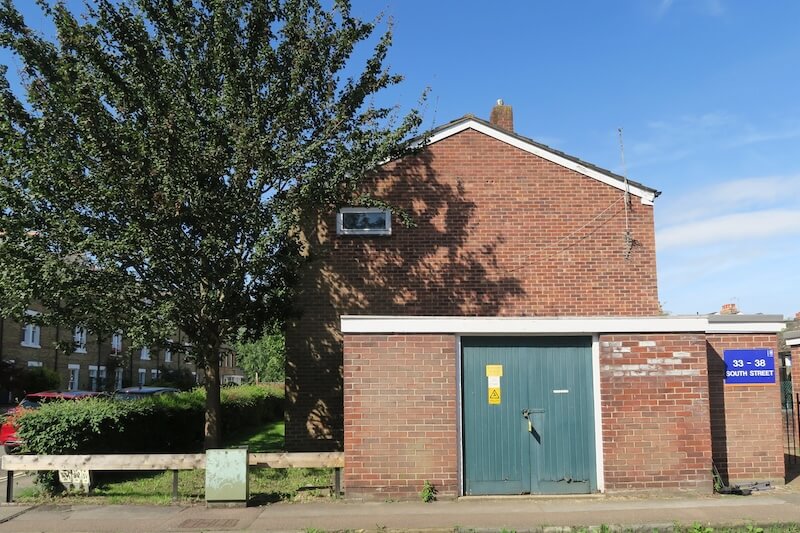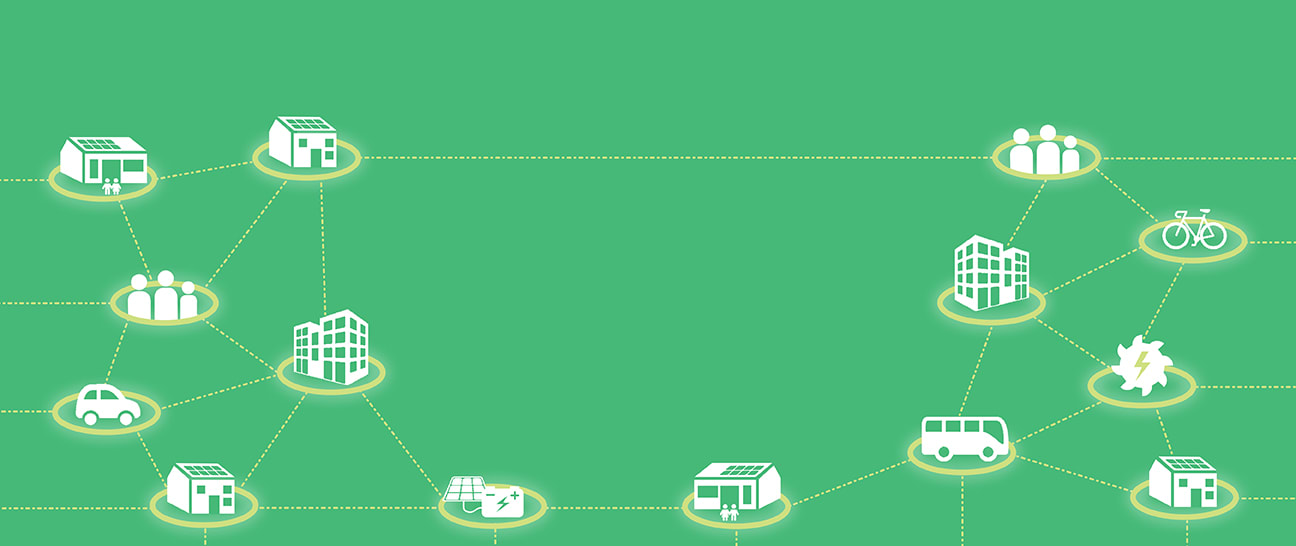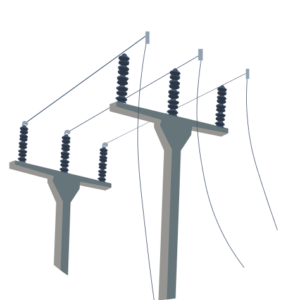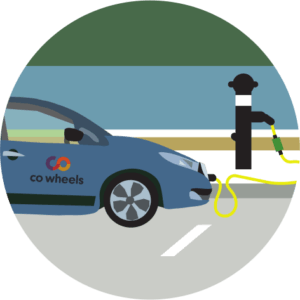2: Secondary substation

The South Street secondary substation is situated in this residential street in Osney. It provides the power for around 300 homes and half a dozen businesses.
Secondary substations are strategically positioned within communities, to ensure efficient power distribution over shorter distances. This reduces energy loss and enhances the continual reliability of our electricity supply. They act as intermediaries between primary substations and end users. These substations receive electricity at medium voltage (11kV) from primary substations and use transformers to ‘step down’ the voltage, to the low 240V voltage, suitable for our homes and businesses.
Traditionally, temperature monitors were used to monitor a secondary substation’s capacity during peak times. The temperature increases as more electricity flows through the substation. As part of the Project LEO Osney Supercharge trial, digital monitoring was implemented in the South Street secondary substation. This upgrade allowed for real-time monitoring of the five feeder cables connecting the secondary substation to local properties and provided insights into the local electricity demand 24/7.
Through the monitoring it was found that sometimes the local energy generation was sufficient to meet the entire energy demand from properties linked to the South Street feeder, and on rare occasions, exported power to other local feeders. More local generation would enable us to meet more of the local energy demand, more of the time.
Presently, the secondary substation has surplus capacity, or ‘head room.’ However, even today adding further PV, batteries, heat pumps, and EV chargers could result in voltage fluctuations which test the resilience of this local substation. As we transition away from fossil fuels, the demand for electric vehicles and electric heating systems such as air source heat pumps will increase. This escalating demand will start to put a strain on the substation especially at times of peak demand.
One option is to upgrade the substation so it can support greater electricity usage on the local network. However, this is costly, and in an area like Osney where space is at a premium where would we find a 5 metre by 5 metre area to site a new upgraded substation? Alternatively, we can look to ‘flatten’ the peaks in electricity demand, by shifting demand to times when there is spare capacity in the network, or generate and store more electricity locally to help meet local demand with local supply.
Reflective questions:
- Do you know where the secondary substations are in your community? There may be more than one.
- What would happen if everyone on your street wants to install an EV charger and heat pump?
Reports and resources:
Osney Supercharge was one of six Project LEO Smart and Fair Neighbourhood trials.
Read the case studies and watch our short Smart & Fair Neighbourhood Trial video.
Want to see the current generation and capacity availability in the electricity network in Oxfordshire – take a look at the SSEN Network map.









